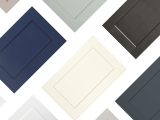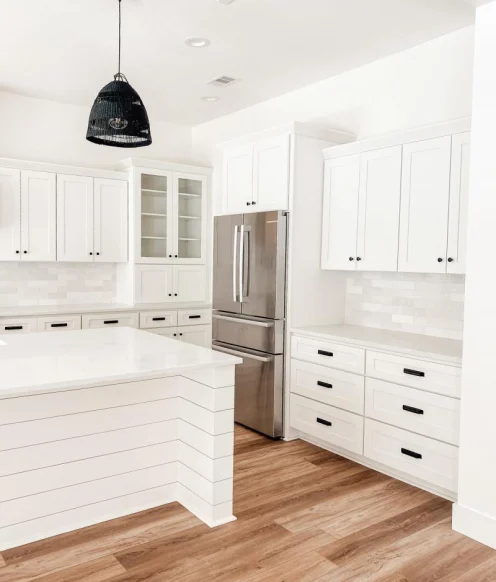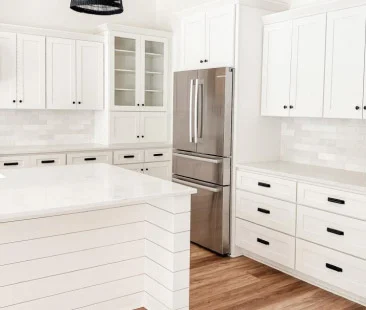Sometimes a kitchen needs to be gutted and remodeled, especially in older homes where there may be hidden damage. More often though, the end goal is simply to improve a kitchen’s look and utility. If your countertops and cabinet boxes and frames are still in good shape, replacing kitchen cabinet doors and refinishing the cabinet faces can be a very viable option, costing a fraction of a full remodel. Here are some tips to make the process go more smoothly for you, and to help ensure you’ll be happy with the end result.
Measure Twice, Click Once
Nothing is worse when ordering new cabinet doors and facing, than getting them and realizing they’re not quite the right size. To order correctly, you’ll need to determine what kind of cabinets you have. In either case, making a drawing of your cabinets, and labeling each door and drawer both in the drawing, and on a piece of masking tape on the actual cabinet pieces themselves, will go a long way toward making sure you have every piece you need.
Framed Cabinets
Framed cabinets are the most common, and include what’s called a face frame, a finished wood frame that can be seen in between the doors, which the doors and drawer slides are mounted to. To measure framed cabinets, measure the space between the two sides of the frame, for each opening. Framed cabinets give you a little leeway thanks to the overlay, the part of the door that overlaps the face frame. A typical overlay is ½”, meaning the door itself is 1” wider than the opening in the face frame, but if you want less of the face frame to show, you can order doors that are wider, for a larger overlay. Our kitchen design experts can help you determine the best options in that case.
Frameless Cabinets
In frameless cabinets, doors mount directly to the sides of the cabinets, usually with concealed hinges. The good news is that there’s a lot less resurfacing and refinishing to be done with frameless cabinets, but it does mean the door measurements have to be very precise, as there’s usually very little room for error. The best way to measure doors for frameless cabinets is to measure the existing doors themselves.
Finished or Unfinished
Especially with framed cabinets, it’s usually considered very important for the doors and the face frame to have identical finishes. There are two main ways to go about this.
End Panels, Laminates, and Veneers
If you want to stick with a natural-looking wood finish, it’s unlikely that you’ll be able to precisely match the species of wood and the color of the stain, especially once it’s darkened with age. To compensate, we offer end panels, laminates, and veneers that you can use to overlay each of the visible surfaces of your cabinets, to match the look of your new doors. Many of our lines even include decorative end panels sometimes called “false doors” for a more refined touch for an exposed end.
Refinish and Paint
Unfortunately, unless you’re willing to go with a much darker look than your current cabinets, stained wood isn’t a good option for refinishing, since it’s almost impossible to go from a darker stain to a lighter one. However, if your desired look is a painted style, refinishing is much easier!
Simply order unfinished doors, or order the same paint used to finish them, and you’ll be able to sand, prime, and paint the face frame and other exposed elements easily while the doors and hardware are out of the way.
Replace Hardware While You Have the Chance
As long as you’re fully disassembling your cabinet doors, drawers, and hardware, why not replace the hardware? New handles and drawer pulls go further toward completing a kitchen’s look than you might think, and old drawer slides and hinges get worn and rickety over time. Not only that, but kitchen hardware options have come a long way in recent years. Check out our soft-close door and drawer hardware for example. We also have an extensive line of storage options that can make using your kitchen a much more pleasant experience!











 Refundable Samples →
Refundable Samples → 














